[ENG/ESP] Urban art: Plaza Pagano's sculptures reflect the ancestral values of the Mapuche people and mother earth. / Arte urbano: las esculturas de Plaza Pagano reflejan los valores ancestrales del pueblo mapuche y la madre tierra.
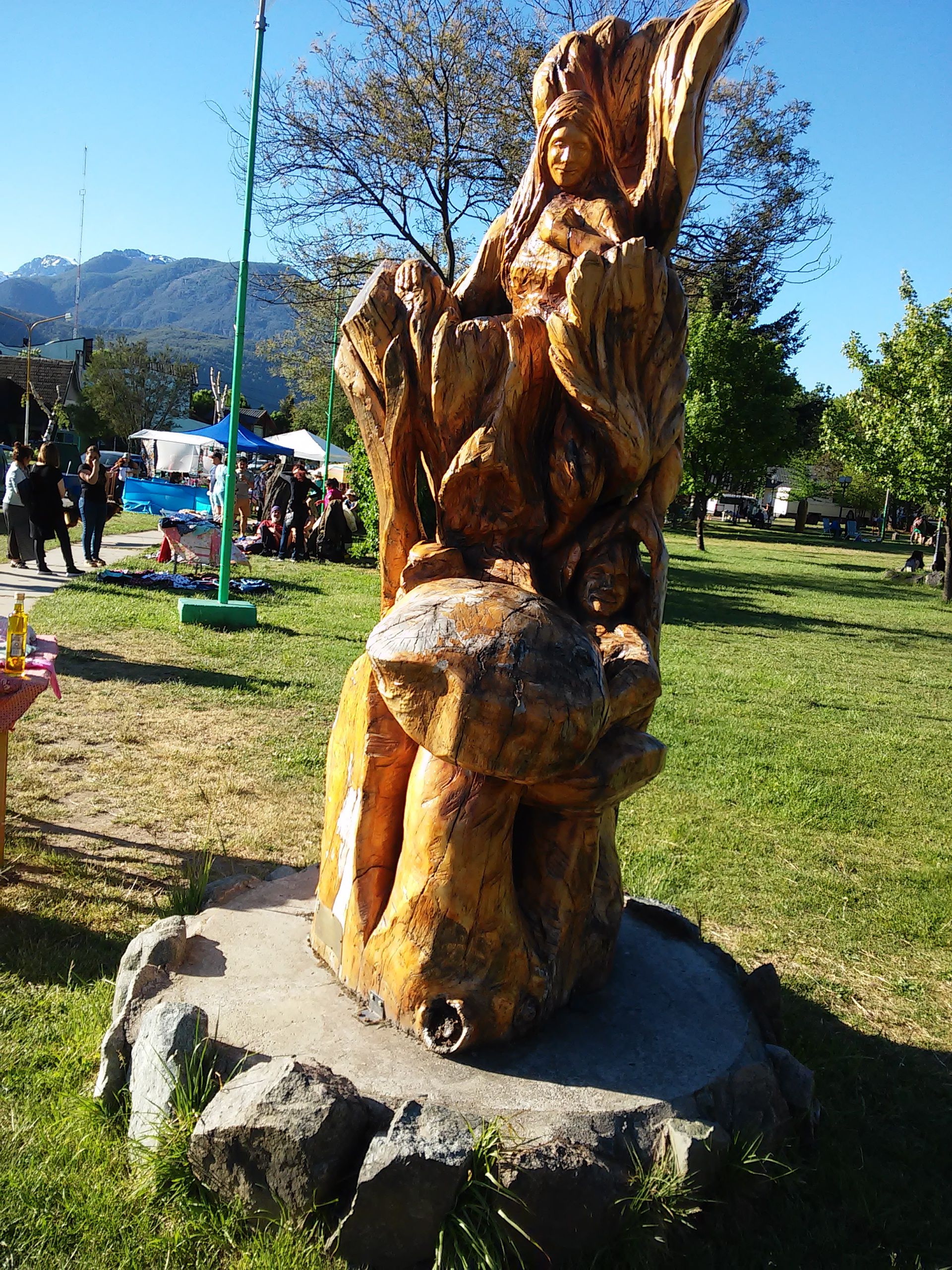
Plaza Pagano is a traditional place in the Argentinean Patagonia, more precisely in El Bolsón, very close to the border with the province of Chubut.
Meeting point and reference for all the artisans of the region called Comarca Andina, they meet periodically on Tuesdays, Thursdays, Saturdays and Sundays to exhibit their handmade products, many of them in wood and also in iron.
And amidst the swarm of people, mostly tourists who always find a reason to buy something and take a souvenir, there are the gigantic statues carved from trees of the region that adorn the park, giving the square a livelier and more eloquent character of their own ancestors.
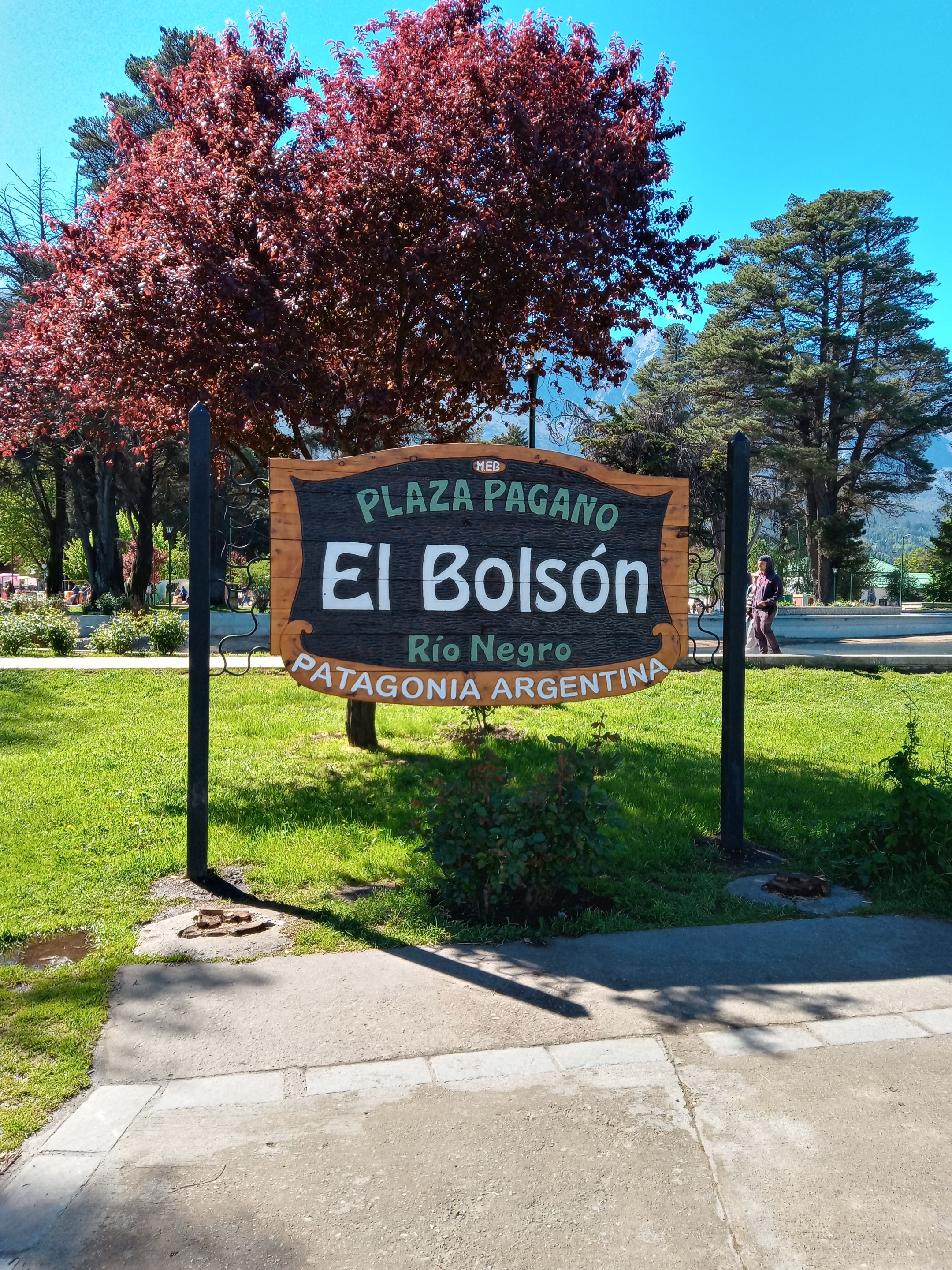
Plaza Pagano es un lugar tradicional en la Patagonia argentina, más precisamente en El Bolsón, muy cerca del límite con la provincia de Chubut.
Punto de encuentro y referencia para todos los artesanos de la región llamada la Comarca Andina se reúnen periódicamente los dias martes, jueves, sábados y domingos para exponer los productos artesanales que ellos mismos elaboran, muchos de ellos en madera y también en hierro.
Y en medio de pulular de personas, por la mayor parte turistas que siempre encuentran un motivo para comprar algo y llevarse de recuerdo, están las gigantescas estatuas talladas en árboles de la región que adornan el parque dándole a la plaza un carácter más vivo y elocuente de sus propios antepasados.
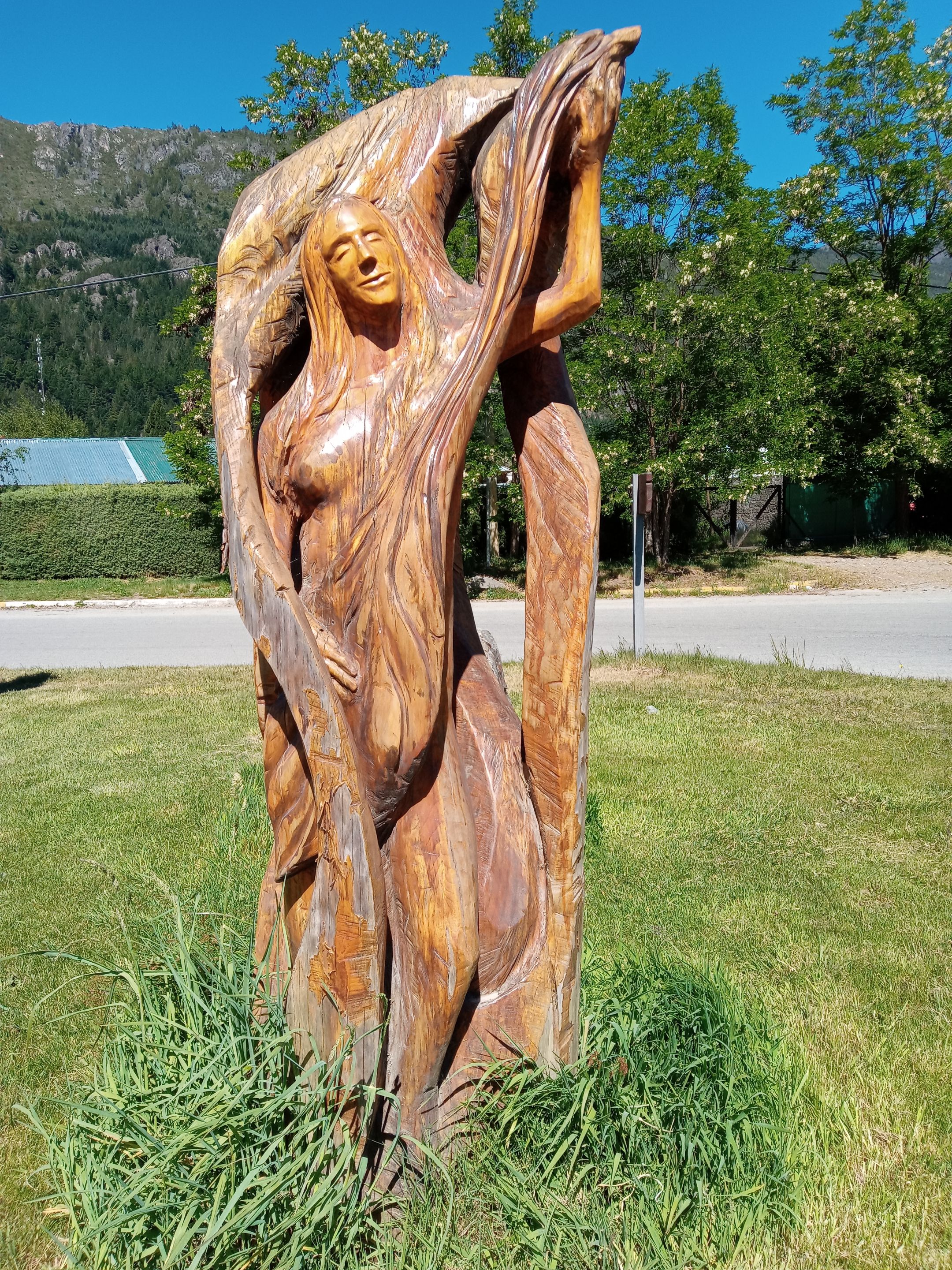
Plaza Pagano reflects all the magic of the region with its centenary trees, its lagoon always very well kept and of course its sculptures.
The square is laid out and located in such a point in El Bolsón that, from any point where you stand, you can see the Piltriquitrón hill that dominates the city.
Its sculptures made with trees of the region have the particularity that they have not been made in another place and transplanted to the square. Instead, sick trees that had to be felled were chosen and the figures that we see in the pictures were carved on their trunks and branches. A true work of art. Recognised and valued as such by the National Secretariat of Urban Infrastructure.
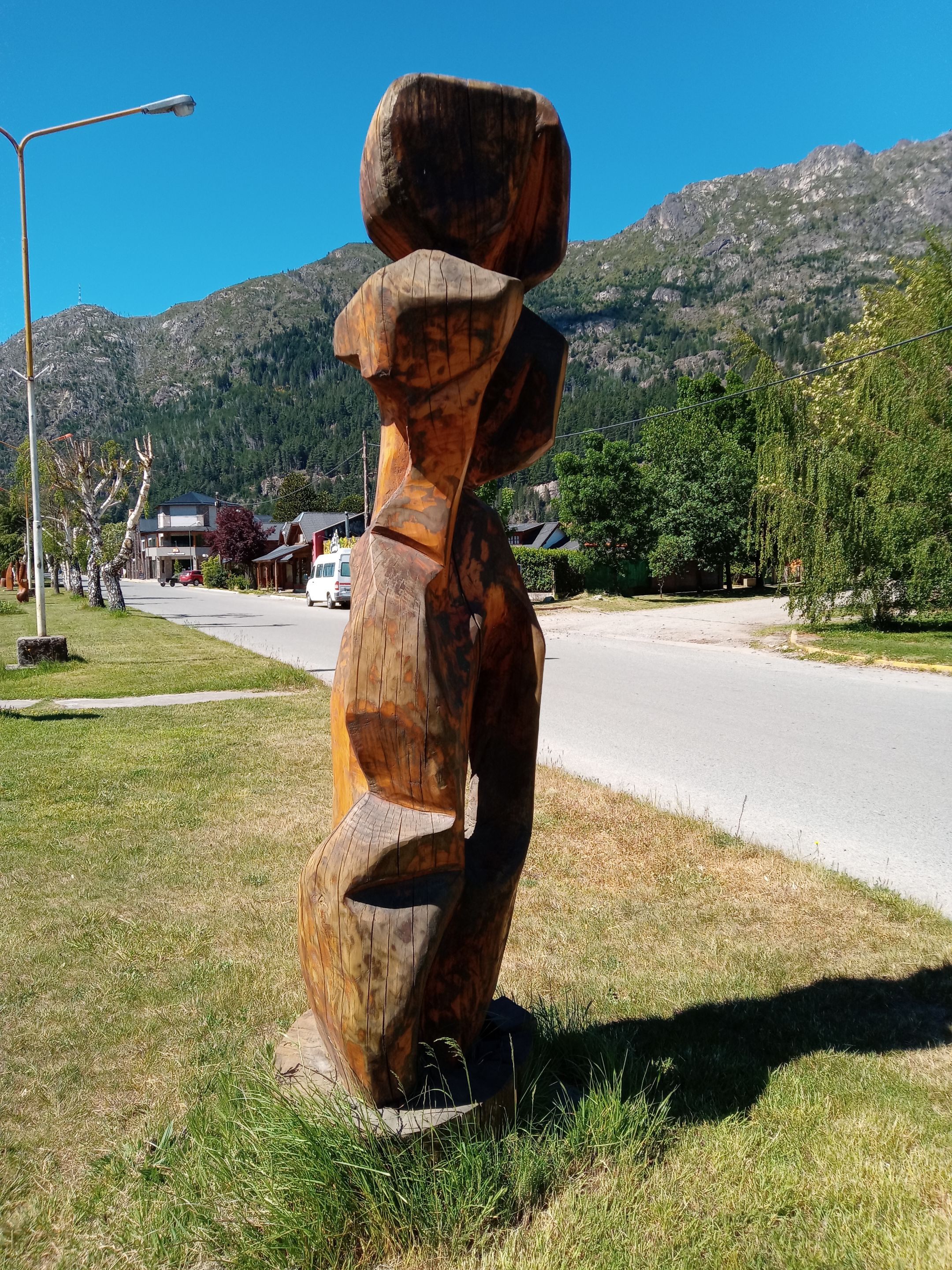
Plaza Pagano refleja toda la magia de la región con sus érboles centenarios, su laguna siempre muy bien cuidada y por supuesto sus esculturas.
La plaza está diagramada y ubicada en un punto tal en El Bolsón que, desde cualquier punto en el cuál uno se sitúe puede ver el cerro Piltriquitrón que domina la ciudad.
Sus esculturas hechas con árboles de la región tienen la particularidad de que no han sido hechas en otro lugar y trasplantadas hasta la plaza. Sino que se han elegido árboles enfermos que debían ser talados y en sus troncos y en sus ramas se han escolpido las figuras que vemos en las imágenes. Una verdadera obra de arte. Reconocida y valorizada como tal por la Secretaría de Infraestructura Urbana de la Nación.
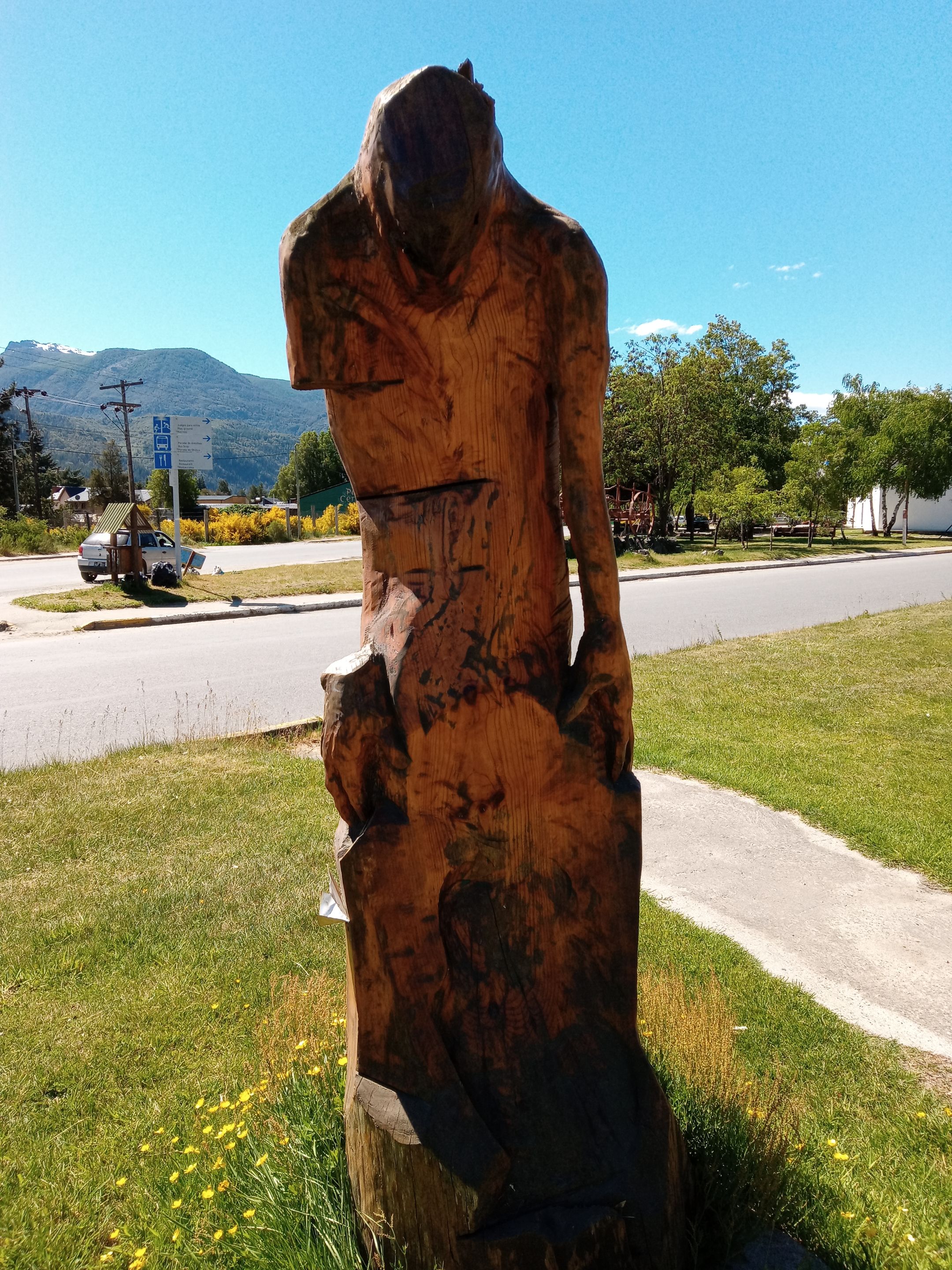
Plaza Pagano has a very high value as an art and urban space dedicated to the representation of its ancestral values and is one of the main attractions of the city and of the tourists who visit it every day.
It is also a cultural meeting point with the organisation of festivals and cultural manifestations of various kinds.
It is not only a meeting point where artisans can sell their products, but also a meeting place to enjoy its deepest values and to connect with the purest essence of this town and its people.
A leisurely stroll through the square, the large craft fair in a real crowd, especially during the summer months, is a must for every visitor. It is a place of "energetic energy" as the locals say, to take advantage of the "positive energy" that emanates from its main symbol and icon: the Piltri, allowing every tourist to take a little of the powerful energy that radiates from this region.

Plaza Pagano tiene un altísimo valor como arte y espacio urbano dedicado a la representación de sus valores ancestrales y es uno de los principales atractivos de la ciudad y de los turistas que la visitan a diario.
Además de ser un punto de encuntro cultural con la organización de festivales y manfiestaciones culturales de diversa naturaleza.
No es solo un punto de encuentro donde los artesanos pueden comercializar sus productos, sino también un lugar de encuentro, para disfrutar de sus valores más profundos y de conexión con la esencia más pura de esta localidad y su gente.
Recorrer caminando con tranquilidad la plaza, la gran feria artesanal entre una verdadera multitud especialmente durante los meses de verano, es un paseo obligatorio para todo visitante, "energético" como dicen sus pobladores para aprovechar la "energía positiva" que emana de su símbolo e icona principal: el Piltri permitiendo así que cada turista se lleve un poco de la poderosa energía que irradia esta región.
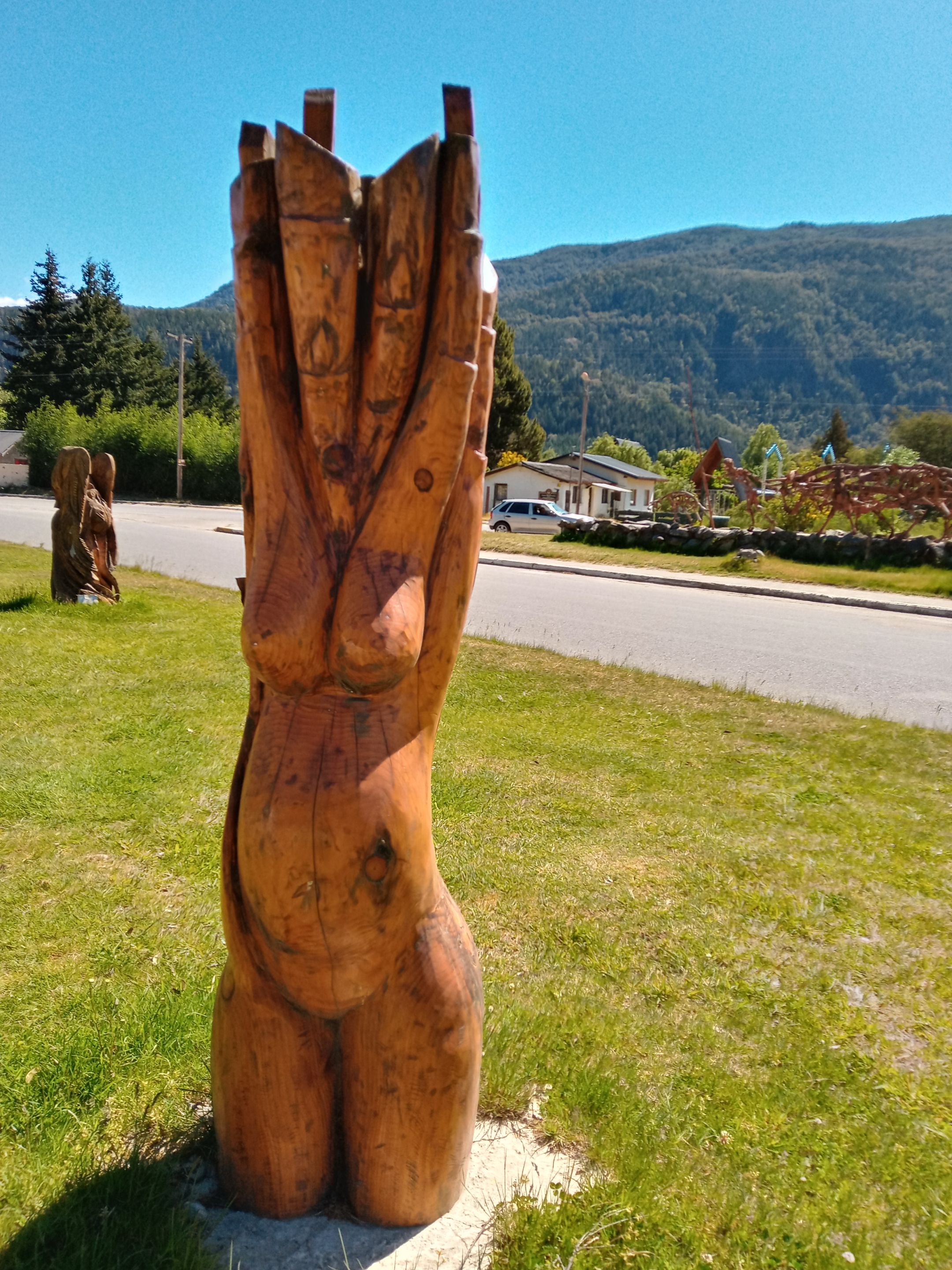
The images on the statues are a constant reminder of the Mapuche presence in the region.
Men, women, fauna and flora, all are represented in these magnificent sculptures carved in wood.
Their colours, their designs, their offerings, everything is related to the ancient indigenous people who populated this region.
And who still today claim their rights over lands that have been usurped from them.

Las imágenes presentes en las estatuas nos recuerdan constantemente la presencia de los mapuches en la región.
Hombres, mujeres, fauna y flora cordillerana, todo está representado en estas magníficas esculturas talladas en madera.
Sus colores, sus diseños, sus ofrendas, toda está emparentado con el antiguo pueblo indígena que pobló esta región.
Y que aún hoy reclama sus derechos sobre tierras que les han sido usurpadas.
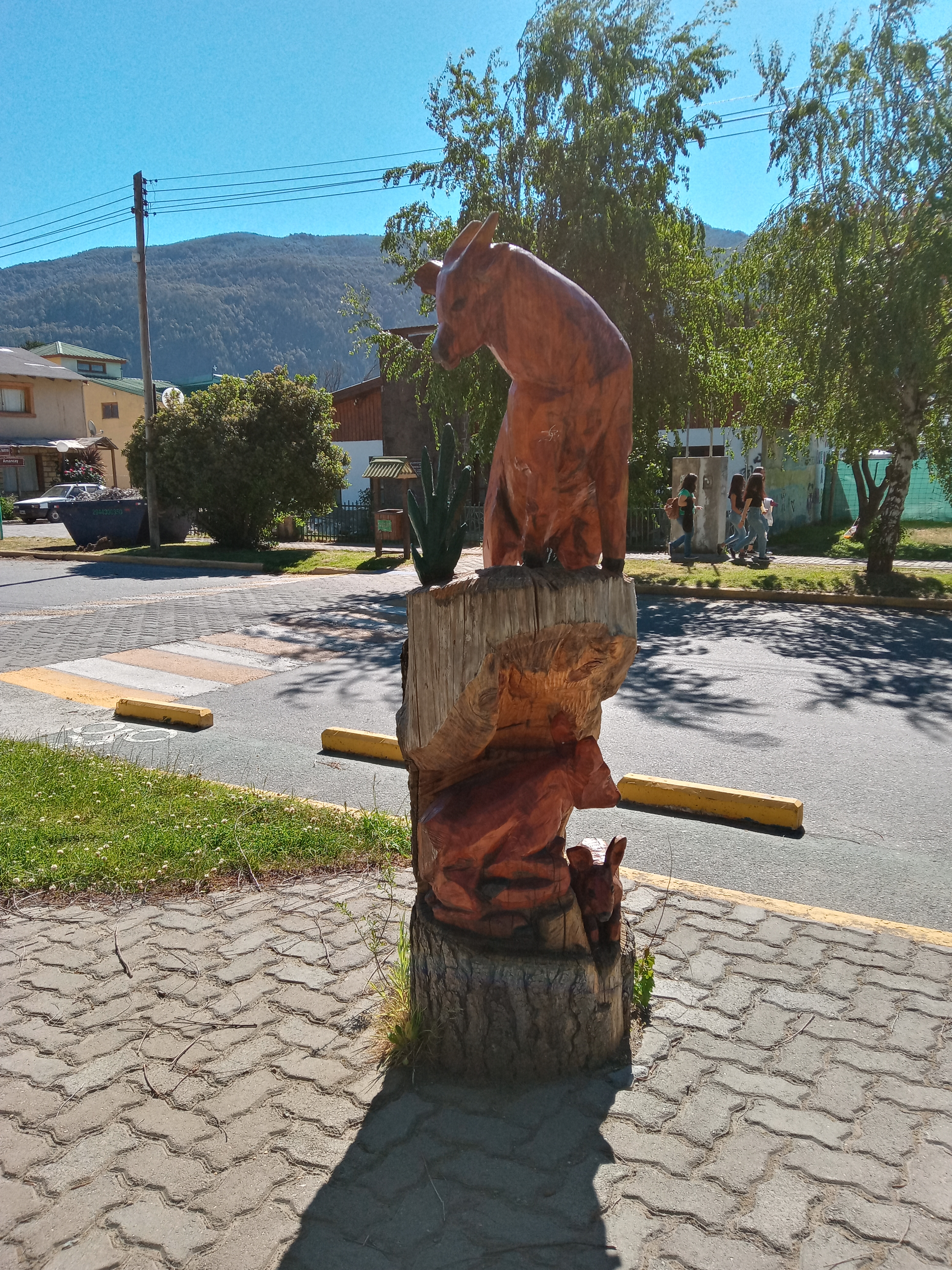
Perhaps the most representative sculpture of all is Follil Mapu Mew by sculptor Emanuel Martínez.
Like so many others, it originated from a diseased tree that had to be cut down. A competition was held in 2006 to create a sculpture from it, with the requirement that it should represent the most deeply rooted and somewhat symbolic values of this mountain region: nature and the tietta.
For this reason the sculpture was called Follil Mapu Mew, which means root of this land.
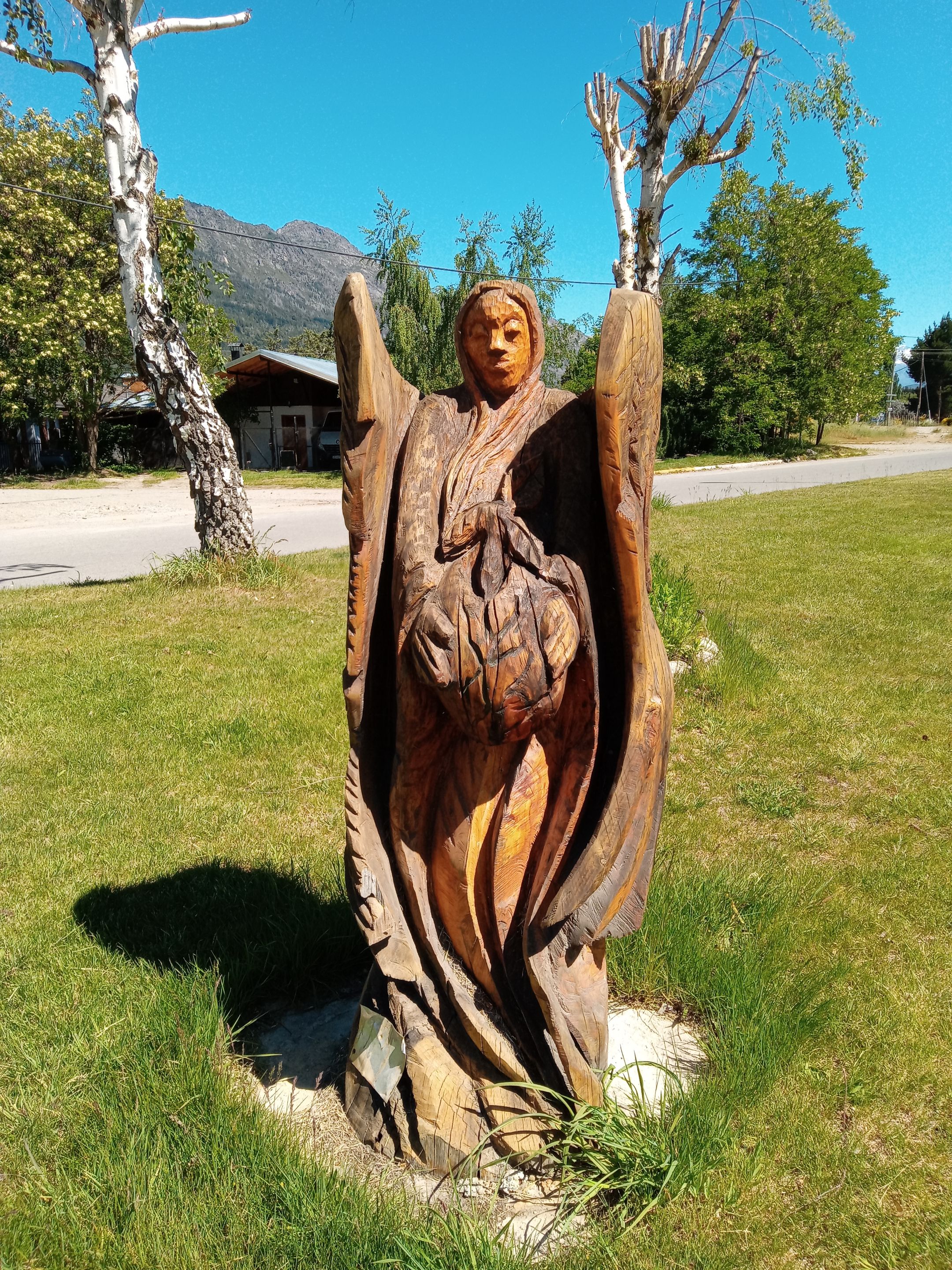
La escultura tal vez más representativa de todas es Follil Mapu Mew del escultor Emanuel Martínez.
Como tantas otras se originó en un árbol enfermo que se debía cortar. Se hizo un concurso para crear en él una escultura en el año 2006 con el requisito que en ella se represnetaran los valores más arraigados y en un cierto modo simbólicos de esta región cordillerana: la naturaleza, y la tietta.
Por este motivo se llamó a la escultura Follil Mapu Mew, que significa raíz de esta tierra.
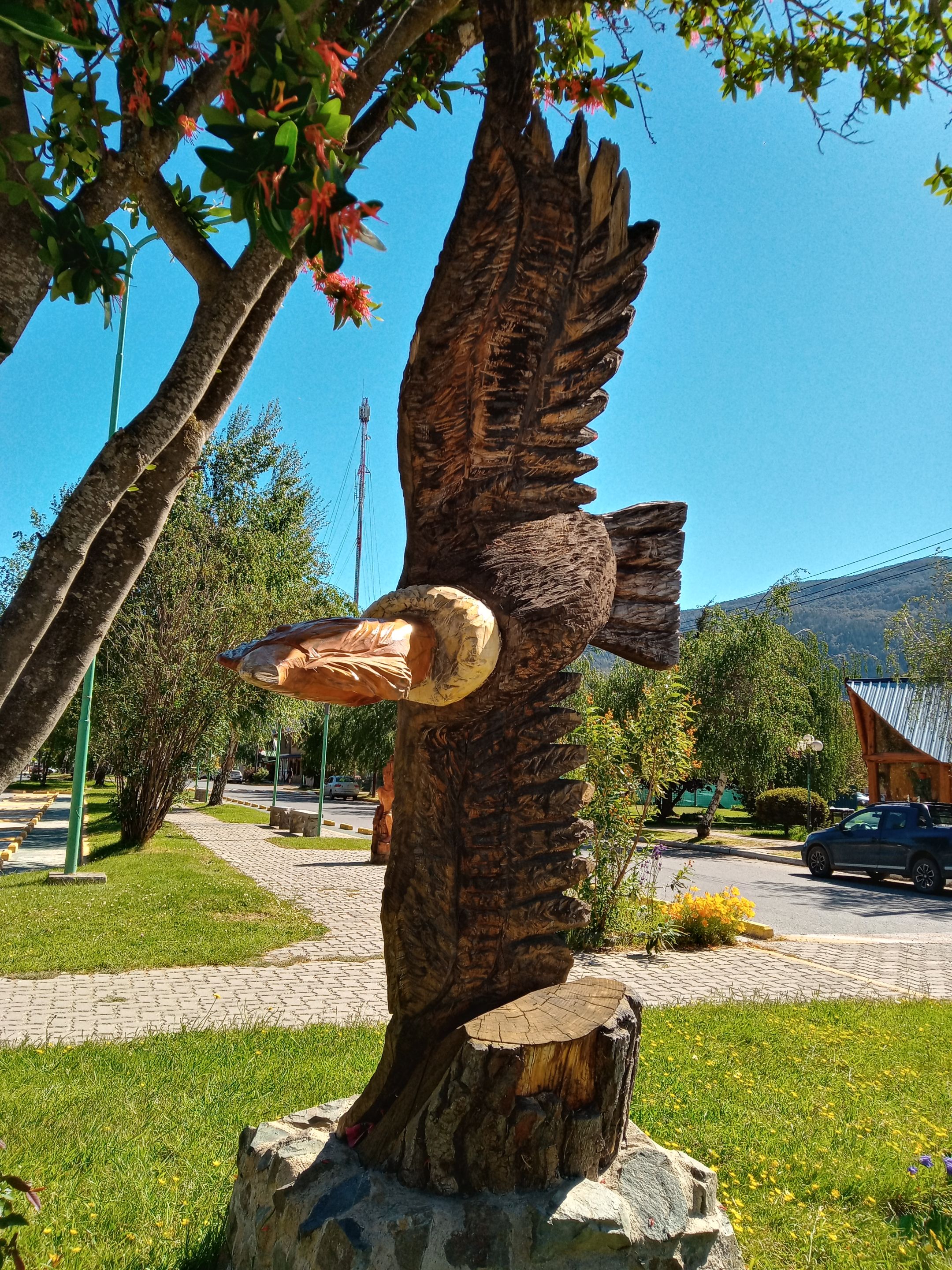
Until our next tour, thank you for reading and sharing my content!
Hasta nuestro próximo recorrido, gracias por leer y compartir mis contenidos!







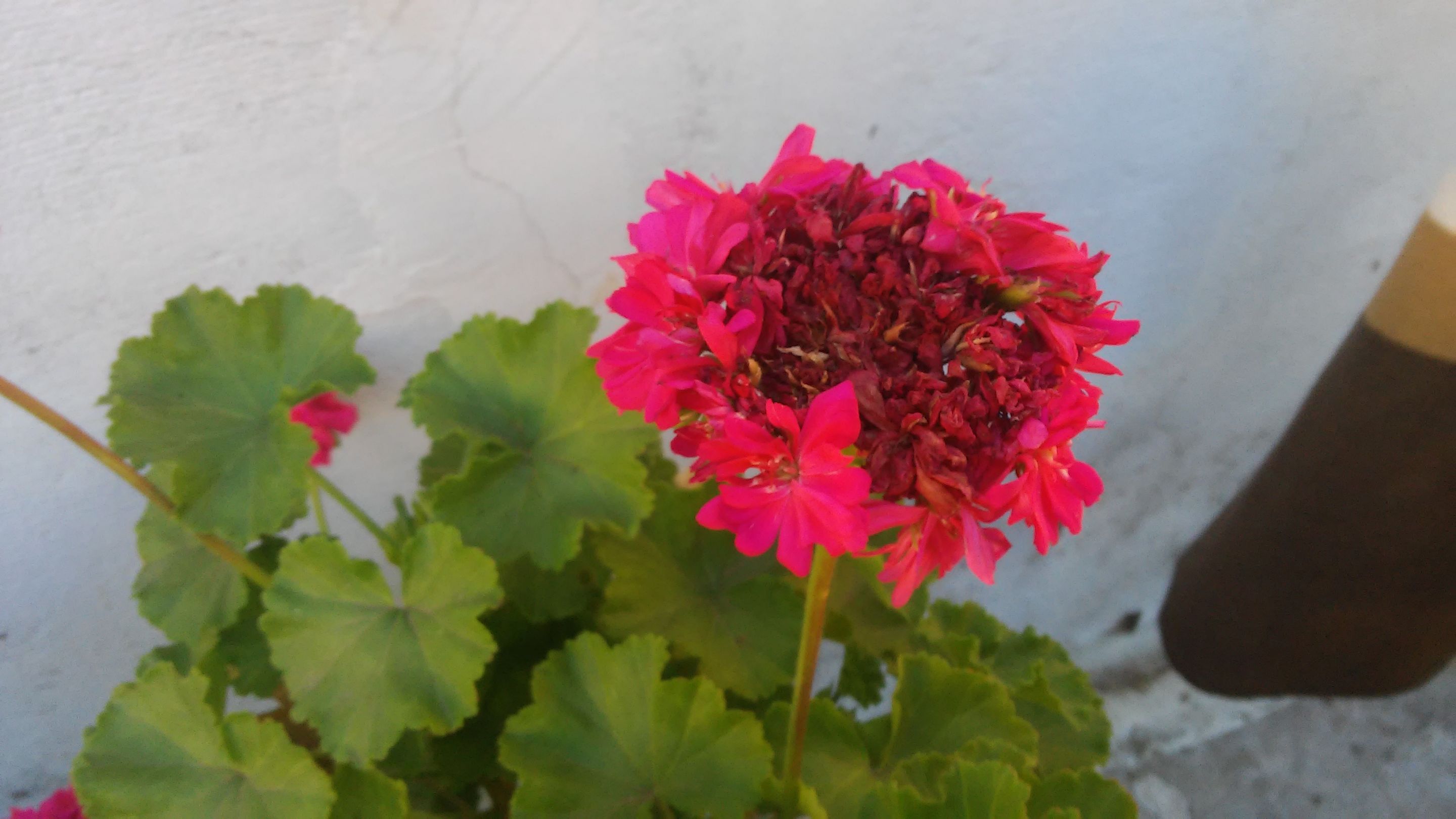





Comments